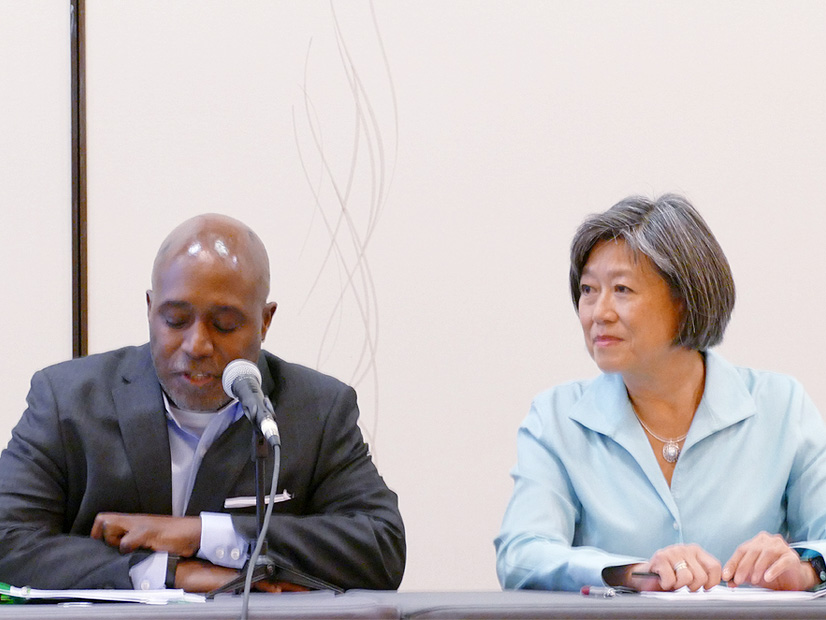
ANAHEIM, Calif. — The National Association of Regulatory Utility Commissioners board has adopted a resolution to emphasize the role grid-enhancing technologies (GETs) and high-performance conductors (HPCs) can play in reducing customer costs and improving reliability.
Board members passed the resolution Nov. 13 at NARUC’s annual conference in Anaheim.
The resolution encourages Congress to appropriate more funding for programs that support GETs and HPC deployment, including two initial rounds of funding allocated to Grid Resilience and Innovation Partnerships Program grants that will benefit 29 states.
“State regulators nationwide support using technologies to get more value out of the transmission grid,” Julia Selker, executive director of the WATT Coalition, said in a press release. “Continuing federal programs would help grid-enhancing technologies double capacity for new generation and integrate new load in the coming years.”
GETs are another “tool in the toolbox” that can help address some of the grid’s biggest challenges — unprecedented load growth, clogged interconnection queues and rising prices — said FERC Commissioner Judy Chang during a Nov. 10 panel at the NARUC conference.
“There are many potential benefits associated with advanced technologies and grid-enhancing technologies, and here at FERC, we’ve been really asking some of those questions,” Chang said. “What’s currently available, what’s possible in the future, what are the costs and how can grid operators and owners facilitate the use of these technologies?”
FERC is exploring different GETs, including dynamic line ratings, advanced power flow controls and topology optimization. The commission has opened a docket looking into dynamic line ratings and is also exploring simpler solutions such as tower-lifting, which can increase the rating of the transmission line by allowing more sag and less risk.
Many of the technologies include benefits without engaging in new transmission siting and permitting — an added benefit given the difficulty of building new transmission.
The tools can unlock the “dynamic capabilities of the grid,” finding transmission capacity for new generation or electric demand at a lower cost than traditional upgrades. Regardless, benefits still need to be balanced with costs, Chang said.
“What else can we do to squeeze more out of the existing infrastructure?” Chang said. “But we as regulators need to think about the balance between adopting new technology and the risk and cost to consumers associated with these things.”
‘Remove the Disincentive’
A challenge in advancing GETs is ensuring proper and established incentives. At FERC, regulators also are grappling with whether they should incentivize or mandate new technologies. Chang said she’s cautious of mandates given the amount of information a regulator needs to establish one properly.
“I’m a big fan of finding ways to remove the disincentive of investments in the right things,” Chang said. “How do I remove the barriers of adoption and remove the disincentive of making that technology available?”
But the success of advancing GETs and HPCs will depend heavily on whether regulators can balance costs. Adequate cost containment for transmission and other investments has yet to be achieved, Chang said, and doing so will require more collaboration between the states and FERC.
“We need to make sure we contain the costs while expanding our grid to accommodate all the needs we have,” Chang said. “This is where FERC and states and transmission owners should come together and find solutions so that we can transparently explain to the consumers what costs we’re spending. Because ultimately, this is the consumer’s pocket we’re talking about.”

